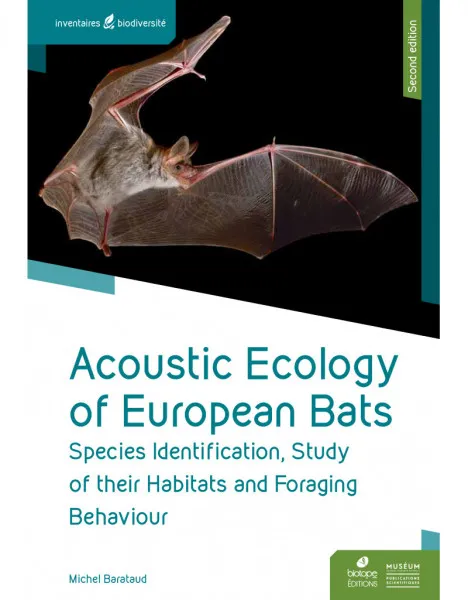
With developments in bat detectors, particularly passive detectors which are left outside to automatically trigger and record any bats that fly past, there is the potential to provide representative acoustic monitoring of bat species distribution and activity as a measure of relative abundance. Whilst software for semi-automating the analysis of sound files is available and can save considerable time in helping to assign recordings to species as a first analyses, acoustic identification using these approaches is not perfect for many species. For this reason, having a clear understanding of how bats calls vary and how far to push identification is essential. Acoustic Ecology of European Bats, which was first published in English in 2015, is the result of over 30 years of research by the author. My previous review of the first edition can be found here.
In 2020, a second edition was produced, which I was keen to review again. As with the first edition, the introduction summarizes the basis of biological sonar and gives an overview of the technologies used to convert ultrasound into audible frequencies. The identification criteria for 34 European bat species (and covered all British bats) are given in detail, with an entire chapter devoted to the methodology of the acoustic study of their foraging habitats. Acoustic Ecology of European Bats focuses on the concept of acoustic ecology, illustrated with many examples. This concept explains how the acoustic behaviour of a bat sheds light on its flight environment, its activity, and diet, contributing in all cases to improving the reliability of species identification.
For this edition, rather than including a DVD, a downloadable folder of sound files is available online here, which I have found extremely useful. It also includes figures in .xls format, comparing important call parameters for helping in the identification of all bat species. Acoustic Ecology of European Bats contains a wealth of information indispensable to amateur naturalists and professionals involved in the management of protected areas or in environmental impact studies.
With the second edition of this book published five years after the first, this remains the most extensive reference to date on the acoustic identification of European bats. For readers who already have the first edition of this book, changes from the first to second edition are small. The main change being an increase in the total number of sound recordings underlying the analyses in the book from 1,058 to 1,153, but there is little new interpretation. For owners of the first edition, there are likely to be too few changes to warrant purchasing the second edition, but those who don’t, and are interested in the sound identification of bats, this is essential reading.
Reviewed by
- Author: Michel Barataud (author), Yves Tupinier, Herman J.G.A. Limpens (contributors) & Anya Cockle-Betian (translator)
- Publisher: BIOTOPE, Paris
- Publication year: 2020
- ISBN: 9782366622447
- Format: Hardback
- Page count: 352
- RRP: £49.00
- Available from: Oxford Academic
